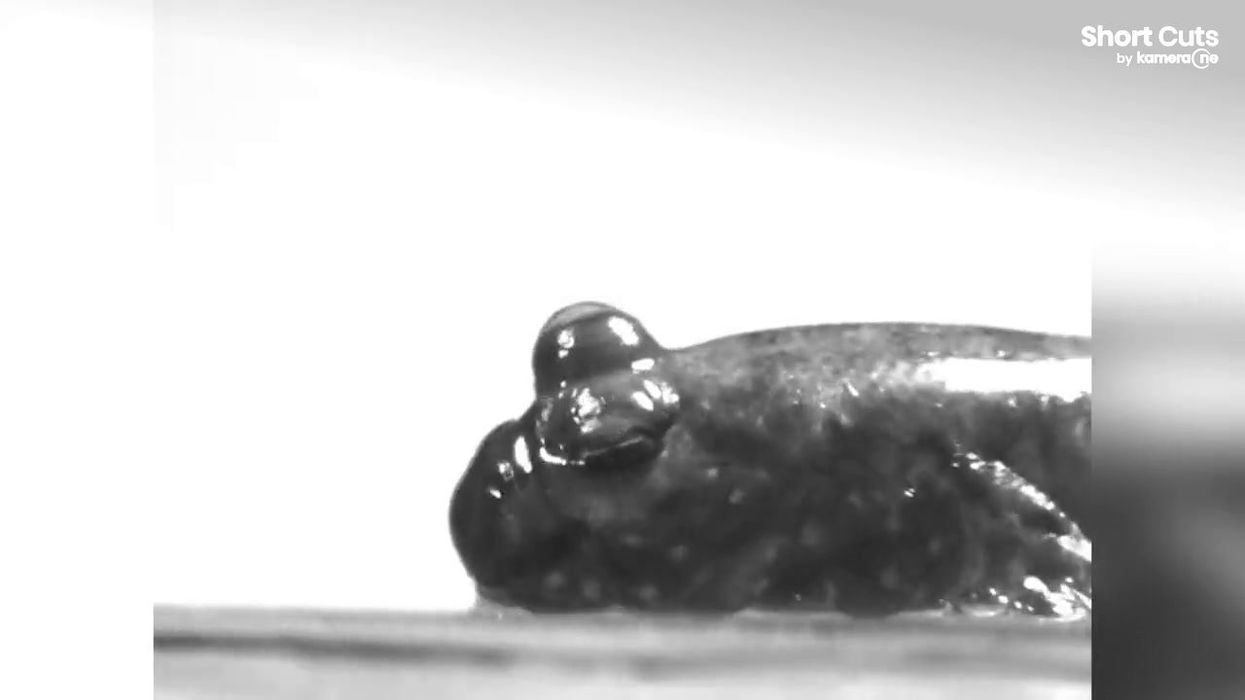Ellie Abraham
Apr 26, 2023
Blinking fish sheds light on how our aquatic ancestors transitioned to land
content.jwplatform.com
If you’ve ever wondered why most humans and animals need to blink, an amphibious fish may just hold the answer.
Blinking in humans is a reflex that happens involuntarily anywhere between 10 and 20 times per minute, helping to keep our eyes moist and clean. But, for some species of animal such as fish, the water they swim in is enough to keep their eyes hydrated enough without it.
The amphibious mudskipper fish is one rare species of animal which does blink and studying it has revealed how blinking evolved in our ancestors.
Humans eventually evolved from tetrapods – four-limbed animals which first emerged from the water around 375 million years ago.
Due to the change in their environment, they underwent some essential physical adaptations to give them the ability to move and sense the new world around them.
Scientists have observed that almost all land tetrapods, apart from those not closely related aquatic animals, have the ability to blink, suggesting it is part of the many adaptations tetrapods underwent when moving from water to land.
Sign up to our new free Indy100 weekly newsletter
Researchers are now looking at the mudskipper to determine if and why it blinks. The amphibious fish species can leave the water and live on land for up to two days, making them an interesting species to study.
Biologist Thomas Stewart from Pennsylvania State University, alongside lead author biologist Brett Aiello of Seton Hill University and other colleagues, observed Indian mudskippers and Atlantic mudskippers under high-speed cameras.
The footage revealed that the fish do blink and do it by retracting their large protruding eyes down back into the socket where it is covered briefly by the dermal cup membrane before the eyes reemerge from the socket.
Aiello explained: “Blinking in mudskippers appears to have evolved through a rearrangement of existing muscles that changed their line of action and also by the evolution of a novel tissue, the dermal cup.”
He continued: “This is a very interesting result because it shows that a very rudimentary, or basic, system can be used to conduct a complex behavior. You don't need to evolve a lot of new stuff to evolve this new behavior – mudskippers just started using what they already had in a different way.”
Researchers also observed that mudskippers barely blinked while underwater, while on land, they blinked more frequently when faced with conditions that would dry their eyes out quicker, when their eyes were dirty or when defending their eyes from the threat of injury.
Stewart explained: “Based on the fact that mudskipper blinking, which evolved completely independently from our own fishy ancestors, serves many of the same functions as blinking in our own lineage, we think that it was likely part of the suite of traits that evolved when tetrapods were adapting to live on land.”
Have your say in our news democracy. Click the upvote icon at the top of the page to help raise this article through the indy100 rankings.
Top 100
The Conversation (0)













